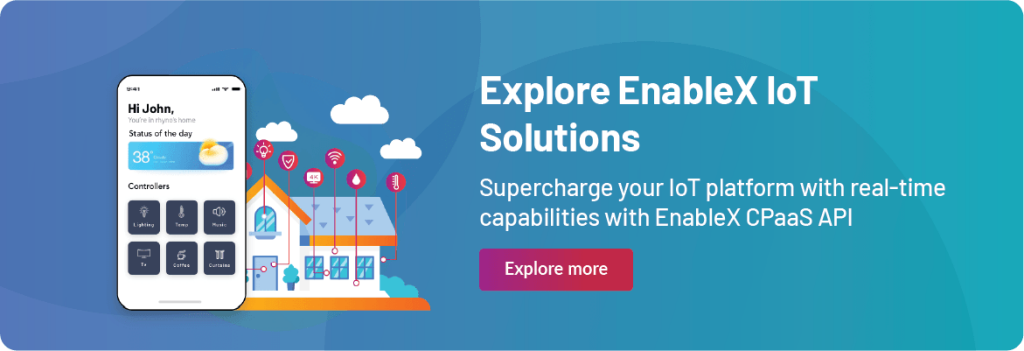The evolution of technology has always played a pivotal role in shaping our cities. In the digital age, 5G technology is emerging as a transformative force that can significantly enhance public security and safety while fostering efficiency and sustainability in urban environments.
The combination of IoT, 5G and autonomous robotics can potentially create billions of dollars in savings over the new few decades. In this blog, let’s examine what public and private sector organizations should consider when choosing 5G based solutions for urban issues.
How is 5G Important for Smart Cities?
According to the United Nations, 68% of the world’s population will reside in urban areas by 2050. Governments worldwide are eagerly anticipating the improved economic and functional aspects of life that smart cities offer.
Based on information from the GSM Association, by 2025, 5G networks are expected to reach one-third of the world’s population. In addition, In January 2023, the European Commission allocated a budget of 200 million euros for funding in the areas of smart cities, healthcare, manufacturing, and agriculture.
The top criteria for creating, building, or procuring a 5G based solution are:
- Reliability and scalability: 5G networks must be highly reliable and scalable to meet the demands of a variety of public sector applications.
- State and federal funding: Organizations should explore state and federal funding opportunities to support specific 5G use cases.
- Smart city innovation: 5G can enable new smart city innovations, so organizations should choose solutions that leave room for future growth.
- Urban implementation experience: Working with organizations that have experience in urban implementation can help ensure a successful deployment.
5G in Smart Cities Use Cases
Use Case 1: Traffic Management and Optimization
Traffic congestion is a pervasive issue in cities worldwide, leading to countless hours of lost productivity, increased pollution, and safety concerns. In 2022, the average American driver spent approximately 51 hours stuck in traffic congestion, equivalent to about an hour per week. This marked an increase of 15 hours compared to 2021. The adverse impact of these prolonged traffic jams was significant, resulting in an estimated cost of $869 in lost time for the typical U.S. driver, as reported in the 2022 Global Traffic Scorecard by the mobility analytics company Inrix.
Among other U.S. cities, Chicago experienced the most severe congestion in the past year, with an average of 155 hours wasted in commuting traffic. This resulted in an annual cost of $2,618 per commuter. Following closely behind were Boston (134 hours, $2,270), New York (117 hours, $1,976), Philadelphia (114 hours, $1,925), and Miami (105 hours, $1,773).
5G and CPaaS can help Traffic Management in the following ways:
- Real-time traffic monitoring: CPaaS-enabled sensors can be deployed at intersections and along roadways to collect real-time traffic data by enabling rapid data transfer with low latency. This data can be transmitted to a cloud-based platform using 5G, and then used to monitor traffic conditions and identify congestion hotspots. This information can then be used to inform drivers about traffic conditions and suggest alternative routes, allowing city officials to make informed decisions in real time. Using objection detection APIs for traffic monitoring, breakdown vehicles can be quickly identified for sending help or towing away. With 5G’s low latency and high bandwidth, real-time data can be collected and analyzed more efficiently.
- Intelligent traffic signals: AI-powered traffic light controls can have a profound effect on improving traffic flow and increasing road capacity by reducing conflicts in vehicle movement. This system includes self-adjusting traffic lights, an edge AI system, and a backend monitoring system. Video from IP cameras is analyzed by the edge AI system before being sent for monitoring. Pre-trained deep learning models provide real-time data to the traffic lights for smoother traffic management. These systems can use real-time traffic data to adjust signal timing and prioritize traffic flow. This can help to reduce congestion and improve the efficiency of traffic movement.
- Vehicle-to-vehicle communication (V2V): CPaaS and 5G can also be used to enable vehicle-to-vehicle communication (V2V). Developers can make applications that can be integrated into the vehicles’ onboard systems and sensors, allowing them to send and receive data. This allows vehicles to communicate with each other and share information about their location, speed, and direction of travel. This information can then be used to coordinate vehicle movements and avoid collisions.
- Public transportation: CPaaS-enabled mobile apps can provide real-time information about public transportation schedules and arrival times. Apps can also be used to allow passengers to purchase tickets and pay fares electronically. This can help to make public transportation more convenient and efficient for riders.
Public service organizations, such as municipal governments, fire departments, and police departments, could enhance communication and monitoring using smart devices. This can lead to improvements in various areas, including traffic management, public safety, transit infrastructure, and the usability of public buildings.
Reduced congestion means less time wasted in traffic, lower fuel consumption, and reduced emissions. Improved safety comes from real-time accident detection and immediate response from emergency services. In essence, 5G and CPaaS are turning traffic management from a reactive to a proactive endeavor, making cities safer and more efficient.
Use Case 2: 5G-Enabled Efficient Waste Management
Effective waste management is critical for keeping cities clean and sustainable. 5G technology is making waste management smarter and more efficient through the deployment of IoT sensors and data analytics. Qualcomm suggests that the widespread adoption of 5G technology has the potential to annually decrease global net emissions by 6%. In addition, more than 60% of manufacturers worldwide are collaborating with specialized technology companies to harness 5G and develop intelligent factories.
5G and CPaaS can help Waste Management in the following ways:
- Real-time monitoring of waste bins: CPaaS-enabled sensors can be attached to waste bins to monitor their fill levels (both volumetric and gross weight) in real time. This data can be transmitted to a cloud-based platform using 5G, and then used to optimize waste collection routes and schedules. This can help to reduce the number of unnecessary trips that waste collection trucks make, which can save money and fuel, and reduce emissions.
- Smart waste collection: Sensors can be used to identify the type of waste in a bin, and then route it to the appropriate recycling or disposal facility. This can help to improve the efficiency and effectiveness of waste recycling and disposal programs.
- Citizen engagement: CPaaS-enabled mobile apps can be used to engage citizens in waste management efforts. For example, apps can be used to provide citizens with information about waste collection schedules, recycling programs, and other waste management initiatives. Apps can also be used to collect feedback from citizens about waste management services.
- Waste reduction: Apps can be used to provide citizens with tips on how to reduce their waste production. They can also be used to track the progress of waste reduction initiatives.
Cleaner streets result from timely waste collection, reducing litter and the attractiveness of pests. Moreover, reduced fuel consumption by waste collection vehicles translates into cost savings and a smaller carbon footprint. The integration of 5G and CPaaS is making waste management not only more efficient but also more environmentally friendly.
Use Case 3: Environmental Monitoring and Sustainability
Sustainability is a growing concern in our rapidly urbanizing world. 5G technology is playing a pivotal role in environmental monitoring, helping cities become more environmentally responsible. According to Aberdeen Strategy and Research, 60% of public sector organizations have reported enhanced security outcomes due to the adoption of faster network connectivity technologies.
5G and CPaaS can help the environment in the following ways:
- Real-time monitoring of air and water quality: CPaaS-enabled sensors can be deployed to monitor air and water quality in real time. This data can be transmitted to a cloud-based platform using 5G, and then used to identify environmental problems and take corrective action. For example, if a sensor detects high levels of air pollution in a certain area, an alert can be sent to authorities so that they can take steps to reduce pollution levels.
- Smart agriculture: Smart agriculture systems can use sensors to monitor soil moisture, crop health, and other environmental factors. This data can then be used to optimize irrigation practices, fertilizer use, and other agricultural activities. This can help to reduce the environmental impact of agriculture and improve the efficiency of food production.
- Waste management: CPaaS-enabled sensors can be attached to waste bins to monitor their fill levels. This data can then be used to optimize waste collection routes and schedules. This can help to reduce the number of unnecessary trips that waste collection trucks make, which can save money and fuel, and reduce emissions.
- Renewable energy: CPaaS-enabled sensors can be used to monitor the performance of solar panels and wind turbines. This data can then be used to optimize energy generation and distribution. This can help to reduce our reliance on fossil fuels and create a more sustainable energy future.
Cleaner air and water improve the quality of life for residents, reducing health risks. Additionally, noise level monitoring can lead to quieter, more livable urban spaces. Sustainable urban planning, guided by real-time environmental data, ensures that cities are developed with a focus on a healthier, greener future.
Conclusion
In conclusion, the advent of 5G technology and Communication Platform as a Service (CPaaS) is ushering in an era of smarter, more sustainable cities. Through real-time data collection, analysis, and communication, these technologies are revolutionizing traffic management, waste management, and environmental monitoring. As we look to the future, it is imperative for city planners and governments to invest in these technologies for urban development.
Smart cities powered by 5G and CPaaS are not just a vision of the future; they are a tangible reality, shaping the urban landscape for the better. Embracing these innovations is not just a choice but a necessity for the well-being and prosperity of our cities and their residents.
EnableX platform provides comprehensive documentation, tutorials, and developer resources to assist users in implementing and utilizing its video API effectively. We have a support team to help users with any questions or concerns. The team ensures that users have an easy and trouble-free experience.
EnableX provides a dependable and advanced solution for video, voice, SMS, and WhatsApp communication, benefiting various industries like business, telemedicine, and education. It helps organizations effectively utilize the power of video communication.
Sign up for EnableX’s free trial account to experience the best communication solutions available.



